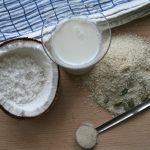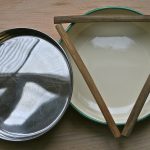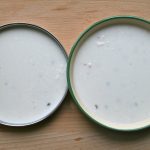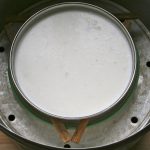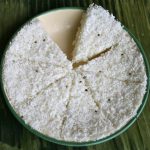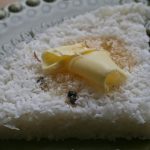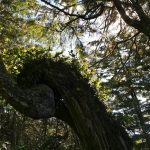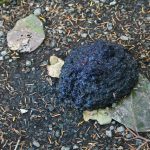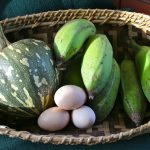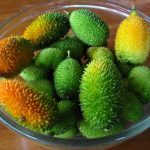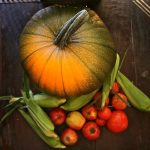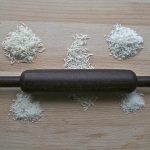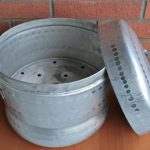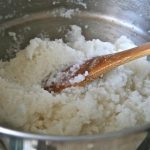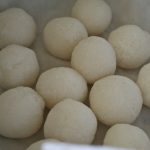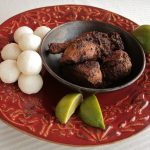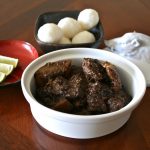Moving on to the second of the three most commonly made puttus, it’s paputtu next.
“Paputtu”, abbreviated from “paal puttu” (paal being milk) is definitely my favourite puttu. The flavours and fragrance of warm cardamom, creamy coconut and lightly sweetened milk mingle to perfection in this steamed rice cake. My mother maintains that the best paputtu she’s ever eaten was made in the home of Doli Sait, a Parsi gentleman who lived in Mercara. It’s no coincidence that he also kept some very fine milch cows!
My favourite memories of paputtu are tied to all those long journeys we made across the country by road. Parked off the highway, in the quiet shade of a Gulmohur tree, gazing out at the surrounding countryside while snacking on wedges of sweet paputtu and sipping “Thermos” flavoured tea. I’d do it again any time, flasky tea and all!
The thari used here is a slightly coarser grain than is used for kadambuttu. (See thari in a hurry).

